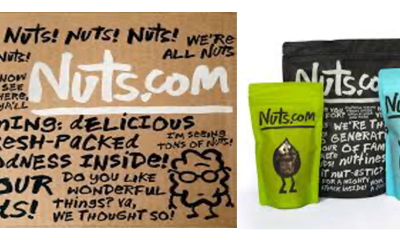Corrugated
5 things to keep in mind to achieve sustainable packaging
Published
7 years agoon
By
BXP StaffThe environment is a major concern for all, businesses and consumers alike. Considering the current situation we are facing concerning global warming and various other environmental imbalances, everyone is trying to do their part in contributing to the wellbeing of our planet. We only have one after all.
Packaging industries are known to generate a lot of waste which has now become one of the biggest environmental concerns. But, it’s not just the waste produced while manufacturing, but also the leftover packages once they have been used that are further aggravating the problem. So what can a packaging company do to reduce the overall environmental impact of their products? The answer is to think of packaging in terms of ecological and economic sustenance.
Here are the 5 things to keep in mind to achieve sustainable packaging:
1. Design Recyclable Packaging
Design packaging that is recyclable by the end user and/or yourself. First and foremost, make it a practice to avoid using materials that are not standard and may cause issues during recycling. There are a lot of established recycled processes, so try and ensure your design complies with them. You can also ensure recycling rates by:
Creating packaging that can easily disassemble
AdvertisementUsing corrugated board instead of cardboard
Eliminating blister packs wherever possible
Designing packaging for single polymer use
Avoiding use of colorants, ink, plastic and other non-recyclable materials
2. Source Sustainable Materials
The key to environmentally friendly packaging design lies in the raw materials and the energy used to create it. Always try and use renewable resources wherever possible so that you don’t deplete scarce raw materials. Try to ensure that your raw materials are produced through sustainable and environment-friendly procedures.
AdvertisementPro Tip – Keep the weight of the package in mind while designing and manufacturing.
Apart from the general guidelines related to packaging weight, weighing the package also comes in handy while estimating raw material requirement, estimating the waste produced and helps plan production accordingly, thereby minimizing costs and wastage. This is why you must use conveyor scales and check weighing scales to weigh the products quickly and accurately.
3. Reduce Use of Hazardous Substances
To truly achieve sustainable design, you need to eliminate the use of any raw materials and products that cannot be recycled or aren’t reusable. Be aware of these hazardous substances:
Heavy metals – such as lead, cadmium, hexavalent chrome, and mercury
Industrial solvents in ink and bleaches
AdvertisementCoatings and adhesives
Paper-bleaching chemicals
Polyvinyl chloride (PVC)
All these products have high levels of hazardous materials and chemicals which aren’t safe for your workers or your consumers.
4. Reusable Designs
Once you have analyzed your raw material scouring and production process, it is time to look into the design aspect. Analyze the packaging and see how the design can be altered to create designs that can be multifunctional, if not fully reusable. You can:
Make the packaging modular and repairable
Use easily removable labels and attachments to allow reuse
Run promotions for consumers to return packaging for further use by manufacturer
You should also take the time out to understand the lifecycle of reusable packaging to ensure better production methods. For instance, a soap dispenser can be reused by refilling it with soap solution rather than buying a whole new dispenser. Such insights enable the company to design products for prolonged use and enhance their production process.
5. Energy Recovery through Packaging
Each type of packaging comes with its set of demands. In some cases, the best environmental option may be to design the packaging so that energy can be recovered from the waste materials. Packaging can be considered as “energy recoverable’ if it can generate more energy than required to drive the combustion process. This energy is valued in terms of ‘calorific gain’. Therefore, all packaging made containing at least 50% organic materials can be classified as energy recoverable if you can demonstrate its calorific gain.
Thoughtful design can reduce the impact that a product has on the environment. From a global standpoint, each and every individual is responsible for the environment and any step taken, big or small, will make significant differences either by reducing harmful effects or inspiring others to do the same, or both. From a business point of view, the best you can do is modify your methods and practices to accommodate the same goal. Redesigning your packaging is a small step in the right direction, which not only reduces costs but also makes your production process more efficient while furthering the greater cause of environmental sustainability.
SPONSORED VIDEO
Branding with Ferocity – Thinking Like an Indie Brand
Get a better understanding on how to leverage new technologies to engage and delight shoppers, sustainability’s role in product and package design – being sustainable and premium are not mutually exclusive, plus best practices and tips for collaboration and how to launch new products and refresh existing product line-ups and brands.
You may like
Advertisement
Subscribe

BULLETINS
Get the most important news and business
ideas from BXP Magazine's news bulletin.
Advertisement







